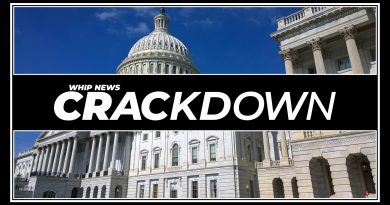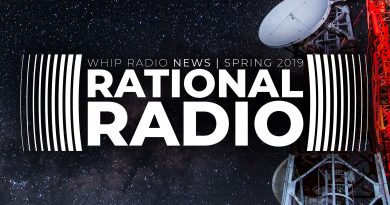Temple Students Protest Against Police Brutality
Content warning: This story mentions violence that might be upsetting for some listeners and readers.
PART ONE
Temple University students knelt in solidarity for the death of George Floyd and other Black victims of police brutality while peacefully protesting across Philadelphia over the past 12 days.
Philadelphians began protesting on May 30 at noon when around 150 people gathered in front of City Hall to raise their fists and kneel for eight minutes and 46 seconds, the Philadelphia Inquirer reported.
This was the same amount of time that former Minneapolis police officer Derek Chauvin knelt on Floyd’s neck after arresting him on May 25 for allegedly purchasing cigarettes with a counterfeit $20 bill, the New York Times reported. A private autopsy showed that Floyd died due to the pressure Chauvin applied to his neck and the pressure two other officers applied to his back, the New York Times reported.
Many of the protesters at City Hall then marched to the Philadelphia Museum of Art, where Black Lives Matter Philly held a peaceful rally on the museum’s steps at 2 p.m.
However, while the crowd of thousands marched back through Center City after the rally ended, some people became more aggressive. Notably, a group surrounded the statue of former Mayor Frank Rizzo in front of the Municipal Services Building to vandalize and attempt to topple it. Others burned and looted stores along Chestnut and Walnut Streets.
Cheyenne Corin, a reporter who received her master’s in journalism from Temple this spring, said that many of the people who incited these violent activities were not the original peaceful protesters.
“Those people were like agitators or just trying to take advantage of the moment,” Corin said. “The actual protesters were all the way by City Hall and had a whole different mission.”
Nenseh Koneh, a journalism major who graduated this spring, said that police officers also played a role in causing the protests to escalate to violence.
“Police started cornering us on Race and Vine [Streets],” Koneh said. “And then all of a sudden I see these people on top of a police car and then I started hearing people screaming… I see a police officer slamming a girl onto the floor into broken glass. And then a police car got blown up.”
Mayor Jim Kenney signed an emergency executive order on May 30 to issue a mandatory citywide curfew from 8 p.m. May 30 through 6 a.m. May 31 in response to the “actions of vandalism, property damage, rioting, and/or looting,” according to the order.
The Philadelphia Police Department reported that 208 people were arrested from noon on May 30 through the morning of May 31. Of these arrests, 138 were for curfew violations, 48 were for looting or burglary, four were for theft, four were for assault on police, three were for firearm violations and 11 were for other civil violation notices.
Philadelphians came together on the morning of May 31 to organize cleaning initiatives throughout Center City and other damaged public spaces.
“It was so uplifting to see so many members of the community, including some people from Temple which I saw down there, cleaning up and just really making sure that they get back up,” said Nic Uff, a junior Media Studies and Production major.
That afternoon, Philadelphians resumed holding peaceful demonstrations to demand justice for Floyd, with large crowds gathering in front of City Hall and the PPD headquarters at 8th and Race Streets.
However, some people also began looting and committing other violent acts throughout the city. In response, Kenney issued a mandatory citywide curfew from 6 p.m. May 31 through 6 a.m. June 1. Police officers shot rubber bullets and fired tear gas at looters at the corner of 52nd and Walnut Streets who were out after the curfew, the Philadelphia Inquirer reported.
The next episode of Macroscopic will discuss Temple students’ experiences at protests held after May 31.
PART TWO
Temple University students were among thousands of Philadelphians who were tear gassed after protesting on the Vine Street Expressway in solidarity with George Floyd and other Black victims of police brutality on June 1.
Mayor Jim Kenney and Police Commissioner Danielle Outlaw cosigned the use of tear gas after hearing reports that protesters were rocking the vehicle of a lone state trooper parked on the highway, according to a press release on the evening of June 1.
“…We simply cannot condone behaviors that endanger the lives of others, like traversing an open highway,” Kenney wrote in the press release. “The officers on site were concerned about the safety of protesters as well as those who may be driving on the highway.”
However, the Temple students who attended the demonstration said that there was no evidence that protesters were inciting violence against law enforcement officials.
Claudia Salvato, a spring 2020 graduate who majored in journalism, said that a police officer near the entrance of the Vine Expressway did not attempt to stop the protesters from marching down the embankment towards traffic.
“I walked right by a cop car that was parked, and he was leaning on his car and wasn’t saying anything,” Salvato said. “There was only one of him so it’s not like there were a bunch of officers warning us not to go down there.”
Jonathan Fragozo-Gonalez, a junior Spanish education major, said that the protesters acted primarily peacefully as they marched onto the highway.
“The group started pushing through and broke the [fence surrounding the Vine Expressway] and people started pouring onto it, but there wasn’t really any destruction of property other than that pushed-down fence,” Fragozo-Gonzalez said.
After the protesters reached the street level of the Vine Expressway, their interactions with drivers stuck in traffic were also peaceful.
“They were rolling down their windows, they were putting out their fists in solidarity,” Salvato said. “And a lot of them were filming us and just seemed really excited about what was happening.”
WHYY reported that interactions between protesters and police officers on the Vine Expressway also did not escalate, with a video showing protesters kneeling and chanting in front of armed troopers but not inciting violence.
Shortly after this, law enforcement officers fired pepper spray, pepper pellets, bean bags, tear gas and a non-chemical white smoke at the protesters, according to the press release.
“You don’t really see the white, powdery gas, you just feel it,” said Nenseh Koneh, a spring 2020 graduate who majored in journalism. “I can’t breathe, my skin is starting to burn…I’m already half-blind so I can’t risk losing my other eye.”
Kenney and Outlaw announced a plan on June 15 to conduct an independent review of the city’s response to the protests, including law enforcement officers’ actions on June 1. The review will likely include an analysis of police reports, video footage, interviews with participants and more.
Kenney also announced plans to reform the Philadelphia Police Department, including reviewing policies involving gun use, disciplining officers and civilian oversight, the Philadelphia Inquirer reported.




